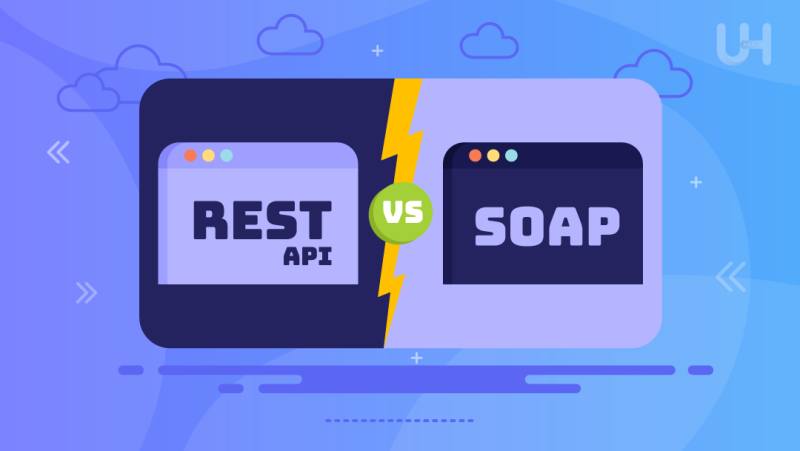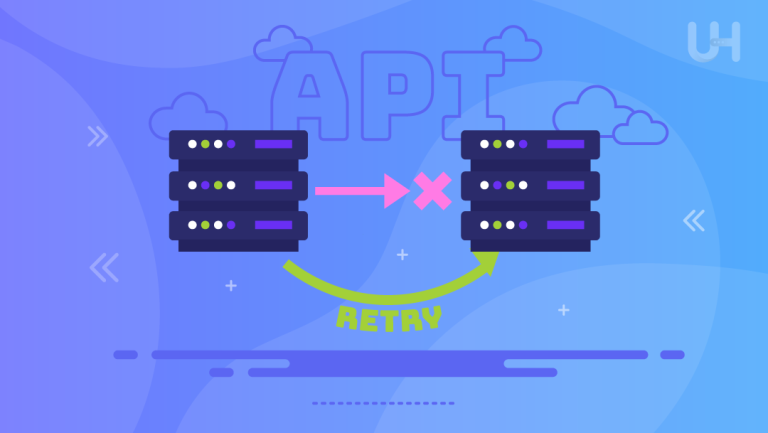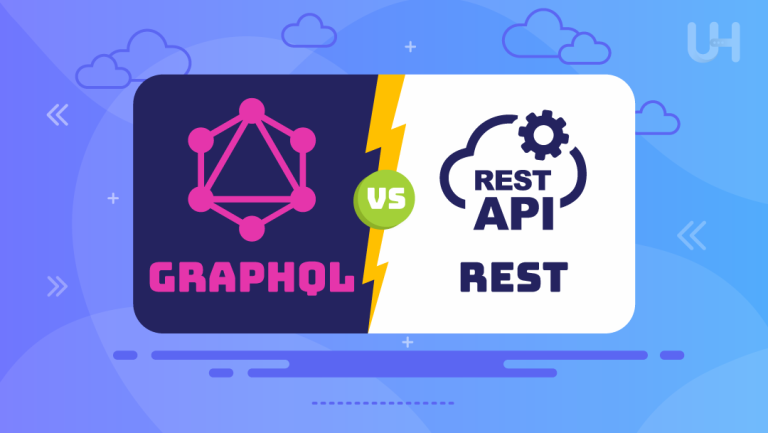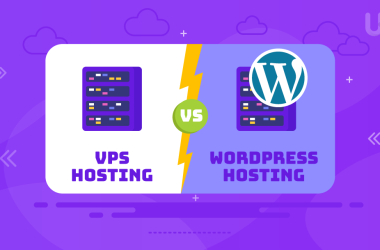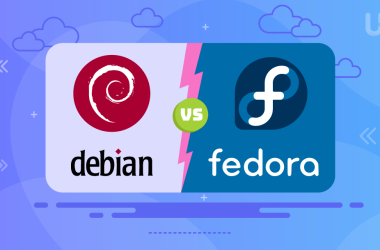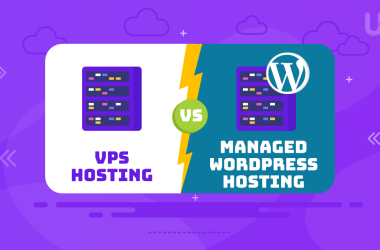APIs are a basic building block for efficient, scalable, and secure applications to communicate between different systems. Among many other types of APIs, the most used methods are REST and SOAP. Each, REST vs SOAP, has some advantages and disadvantages, which come into account when deciding between them in any use case and within the limits of a given development environment.
In this post, we will explore the Key differences between REST vs SOAP. By the end, you will have a solid understanding of both API architectures, their pros and cons, and how to decide which one best fits your project. Let’s start by defining an API and then look at the basic principles of REST and SOAP.
What is API?
The API, or Application Programming Interface, is a set of rules through which one software program can interact with another. APIs define the methods and formats of the data in this interaction, enabling different programs to understand each other and further work with each other effortlessly. They act like intermediaries, allowing different systems or software components to interact with each other, which could be anything from web applications and databases to external services.
APIs can take many disguises, from an internal function inside one application to a public interface between two completely separate systems. Modern development extensively uses them for system integration, such as cloud security services, social media platforms, and e-commerce functionality. Whether you’re using an API to interact with a payment gateway or a social media platform, the goal remains exactly the same: provide a reliable and efficient mode of sharing and manipulating data.
What is REST API?
REST, or Representational State Transfer, is an architecture style for designing networked applications. Other web services using REST APIs expose this via HTTP methods such as GET, POST, PUT, and DELETE. The basic fundamental of REST states that the latter must understand and process every request from a client to a server. REST APIs are, therefore, very scalable and efficient in web-based service provision.
RESTful APIs are popular because of their simplicity and flexibility. Given the underlying light communication protocols, they work well with JSON or XML data formats and provide high performance. Google, Twitter, and Amazon rely on REST APIs to power their services owing to the architecture’s ease of implementation and adaptability.
Characteristics of REST API
- Stateless communication: Each client request contains all the necessary information, so the server doesn’t need to remember previous requests.
- Client-server architecture: The client and server are separate, with each responsible for its respective roles in the interaction.
- Scalability: REST APIs are lightweight, making them suitable for large-scale systems.
- Uniform interface: The interaction between clients and servers follows a standardized format, regardless of how the APIs are implemented.
Pros of REST API
- Simple to use and understand: Works with standard HTTP methods and is easier for developers to implement.
- Flexible data format: Supports multiple formats like JSON, XML or HTML, etc.
- Faster performance: Due to its lightweight nature and statelessness.
- Wide adoption: REST APIs are widely used and well-supported across various platforms.
Cons of REST API
- Limited security features: Lacks the strict security protocols built into SOAP.
- No built-in error handling: Developers must create custom error-handling mechanisms.
- Statelessness can be limiting: In some use cases, maintaining session states between requests is necessary.
Real World Example of REST API
- Social media platforms: Twitter’s API allows developers to interact with tweets and users’ data. For seamless performance, these platforms often rely on reliable social network hosting to handle high traffic and ensure uninterrupted access.
- E-commerce: Amazon uses REST APIs for services like product listings and customer orders. To support such operations efficiently, businesses often rely on e-commerce server hosting to manage large volumes of transactions and ensure a smooth customer experience.
- Cloud storage: Google Drive is a cloud storage that offers REST APIs for file upload and retrieval.
What is SOAP API?
SOAP is an abbreviation for Simple Object Access Protocol and represents a messaging protocol used exclusively to exchange structured information in Web services. After bypassing the RESTful service, since it does not follow strict standards, SOAP is a protocol with all built-in rules and, therefore, highly safe and reliable. SOAP uses XML as its data format; the stringently defined structure for its messages makes it easier to prove out-of-the-box consistency across platforms.
SOAP APIs are most often used within an enterprise where security, reliability, and more stringent message format settings are required. Therefore, most financial institutions and health organizations prefer SOAP, which guarantees advanced security due to its built-in support for WS-Security.
Characteristics of SOAP API
- Strict protocol: SOAP is a protocol with stricter standards and a more formal structure compared to REST.
- XML-based messaging: All SOAP messages are sent in XML format.
- Built-in security: SOAP supports WS-Security for added encryption and security.
- Stateful or stateless: SOAP can handle stateful operations, making it suitable for certain use cases where the state needs to be preserved.
Pros of SOAP API
- Advanced security: Built-in security protocols like WS-Security make SOAP ideal for highly sensitive transactions.
- Consistency: The protocol’s strict rules ensure consistent interactions between systems.
- Extensibility: SOAP supports security, transaction management, and error-handling features.
Cons of SOAP API
- Slower performance: Due to the verbosity of XML and the strictness of the protocol.
- More complex: Harder to implement and maintain compared to REST.
- Limited data format: SOAP only supports XML, which can be less efficient than JSON.
Real World Example of SOAP API
- Banking services: Many financial institutions use SOAP for secure transactions and payment processing.
- Healthcare: SOAP is commonly used in healthcare for exchanging sensitive medical data.
- Government services: Some governmental systems rely on SOAP for its security and reliability.
Power Your APIs with High RAM VPS!
Looking for the best hosting solution to handle demanding API integrations like REST or SOAP? Upgrade to High RAM VPS from UltaHost for seamless performance and reliability, ensuring your applications run smoothly, no matter the load.
SOAP vs REST API: Comparing The Differences
Both SOAP and REST API are unique, thus allowing them to be applied to different use cases. While REST is more flexible and simple, SOAP is much more secure and reliable.
Here is a comparison table illustrating important differences:
| Feature | REST API | SOAP API |
| Protocol | Architectural style (uses HTTP) | Strict protocol (uses XML) |
| Data Format | JSON, XML, HTML | XML only |
| Security | No built-in security (requires HTTPS) | Built-in security (WS-Security) |
| Performance | Faster and lightweight | Slower due to XML overhead |
| Scalability | Highly scalable | Less scalable |
| Error Handling | Custom error handling | Built-in error handling |
| Flexibility | More flexible, lightweight | More rigid and structured |
| Use Cases | Web, mobile apps, IoT services | Financial, healthcare, enterprise apps |
REST vs SOAP: Use Cases
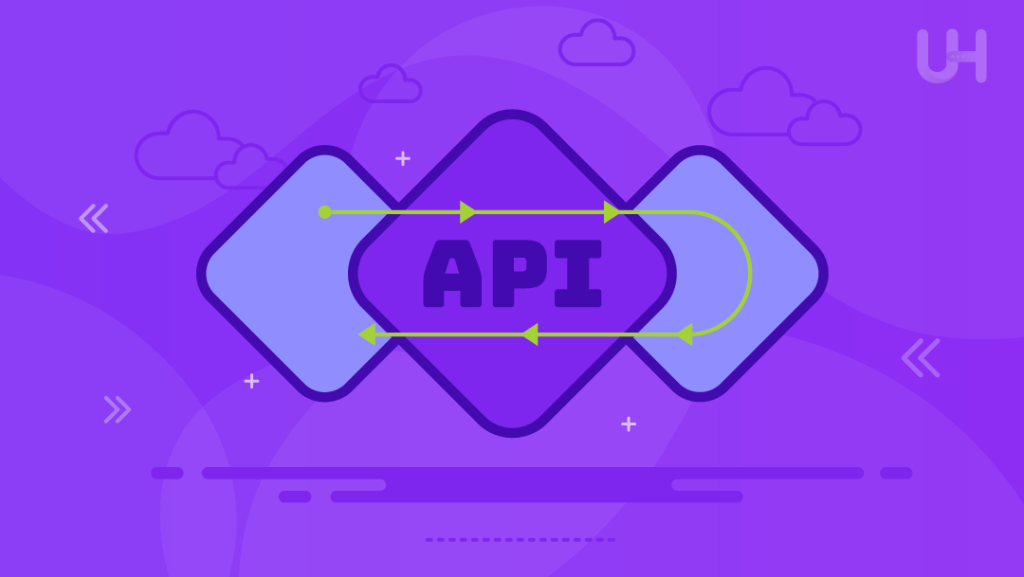
Choosing between REST vs SOAP depends on your project’s specific requirements. While REST is often used when performance and flexibility are crucial, SOAP excels in situations requiring enhanced security and formal structure.
Use Cases for REST APIs
- Web services: REST APIs are ideal for lightweight, scalable web services.
- Mobile applications: REST APIs are widely used in mobile apps due to their speed and efficiency.
- Internet of Things (IoT): The stateless nature and scalability make REST suitable for IoT devices.
- Public APIs: Platforms like Twitter and GitHub offer REST-based public APIs for external developers.
Use Cases for SOAP APIs
- Financial services: SOAP is preferred for payment processing and secure transactions in banking.
- Healthcare: SOAP APIs are used to exchange medical records securely.
- Government services: SOAP is employed for systems requiring high levels of security and reliability.
- Enterprise applications: Large-scale, mission-critical systems often rely on SOAP for its built-in features. Similarly, platforms requiring robust scalability and security, like WordPress enterprise hosting, can also benefit from these structured protocols to ensure seamless and reliable performance.
Conclusion
Which one to use, REST API or SOAP depends on your application’s requirements. REST would be more suitable if you want something light, scalable, and flexible. Otherwise, choose SOAP if your application requires advanced security and following the messaging protocols to the letter. The ability to understand strengths and weaknesses points will help in making the right decision toward the requirements of your project.
Choose NVMe VPS from UltaHost for optimal speed and performance with your REST or SOAP APIs. Our hosting solutions will also enhance your applications’ scalability and security.
FAQ
What is the main difference between REST and SOAP?
REST is an architectural style using lightweight communication, while SOAP is a strict protocol with more formal rules and built-in security.
Which API is better for mobile applications, REST or SOAP?
REST is better suited for mobile applications due to its lightweight nature and faster performance.
Why is SOAP preferred in industries like banking and healthcare?
SOAP offers built-in security features like WS-Security, making it ideal for handling sensitive data in industries like banking and healthcare.
Can REST APIs handle XML data?
Yes, REST APIs can handle XML, but they typically use JSON due to their faster and more efficient structure.
Which API is more scalable, REST or SOAP?
REST is more scalable because it is stateless and lightweight, making it suitable for large-scale systems.
Is REST easier to implement than SOAP?
Yes, REST is generally easier to implement and use, thanks to its simple HTTP-based methods and flexibility.
Can SOAP APIs be used for web services?
Yes, SOAP APIs are commonly used for web services that require enhanced security, reliability, and consistency.





